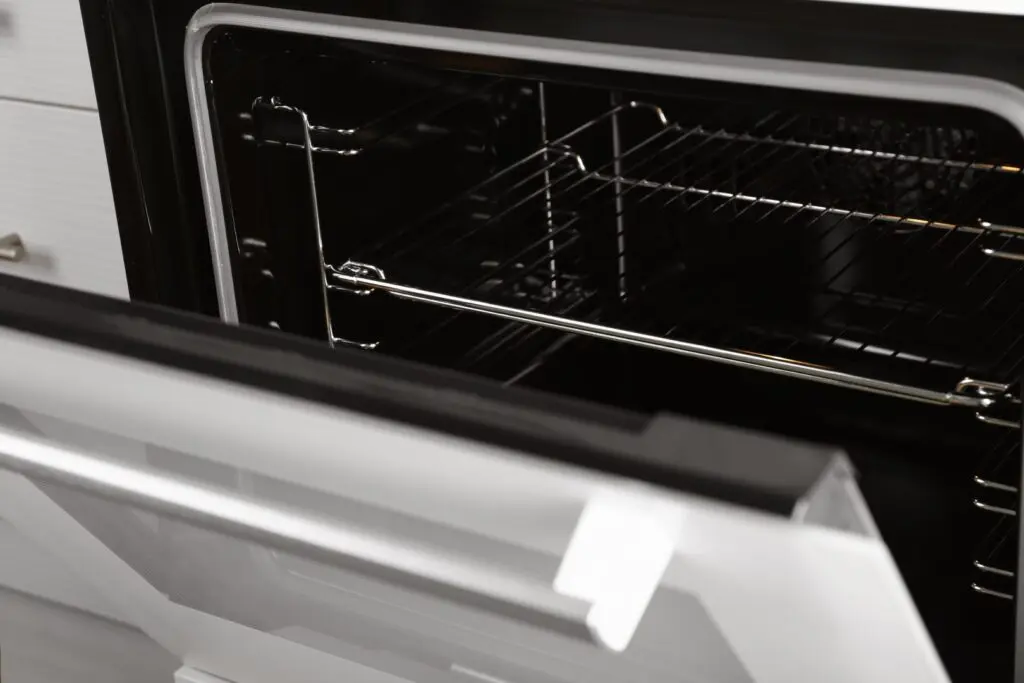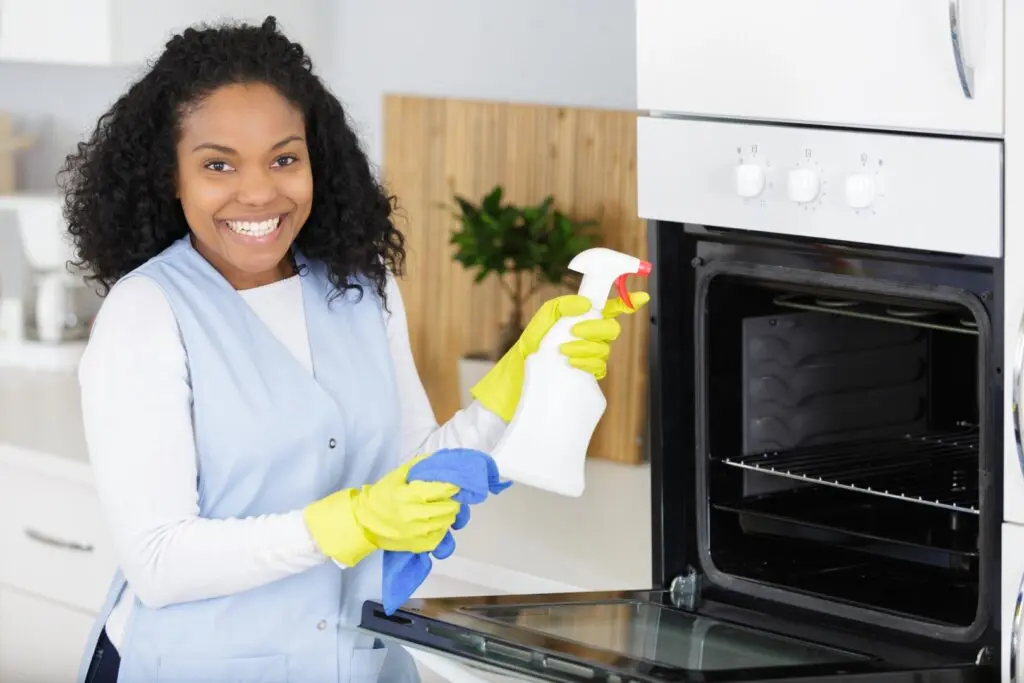Keeping your oven clean will help it last longer and run more efficiently. Whether you’re getting your oven prepped for the holidays or just keeping up with routine maintenance, it’s important to know how to clean your oven the right way.
Of course, not all ovens are created equal. You have different types of ovens – gas, electric, etc. – Teflon® coatings, and other things to consider. As a result, you need a safe and easy way to get the job done.
This is our guide for how to clean any oven properly.
Table of Contents
How often should you clean an oven?
Cleaning up big spills and messes right away is always important. If you use your oven regularly, you should deep clean it once every three months.
Those who use their oven less often can get away with cleaning once every six months. No matter how often you use your oven, regular cleanings will increase efficiency and longevity.
Pro Tip: If you’re concerned about your oven breaking down, consider additional protection for your oven and other home appliances through a home warranty. This can help you cover repair or replacement costs if something malfunctions through normal use.
What do you need to clean an oven?
Before getting started, it’s good to know what you won’t need when learning how to clean your oven.
In a bit of a twist, while most ovens have a self-cleaning feature or clean cycle, it’s best not to use this.
Self-cleaning functions use extreme heat to break down grease and grit. These extreme temperatures can wear out components within the oven itself. Any special coatings inside your oven could also deteriorate in extreme temperatures, producing dangerous fumes.
Commercial oven cleaners are also not recommended. These cleaners contain harsh chemicals that create harmful vapors and are dangerous to use on an appliance meant for cooking food.
What should you use to clean your oven, then?
Here’s everything you’ll need:
-
- Baking soda
- Vinegar
- Water
- Small bowl
- Spray bottle
- Sponge
- Rubber gloves
- Soft-bristled brush
- Cloth or paper towels
What are the steps for cleaning an oven?
Use a homemade mixture for a safe solution to a thoroughly clean oven.
Turn off your oven and let it cool to room temperature
When you learn how to self clean your oven, safety is the first step. Making sure the oven is off and completely cool will reduce the risk of injury.
Remove the oven racks
The oven racks need to be removed and cleaned separately. As you remove the racks, use a paper towel to wipe any loose dirt and debris from the interior of the oven.
Create a homemade cleaning mixture
Mix together a half cup of baking soda with three tablespoons of water. Up the mixture to a full cup of baking soda and one-third a cup of water for an especially dirty oven.
Apply the cleaning mixture
Spread the cleaning mixture throughout the inside of the oven. This mixture is perfectly safe for human skin, so you can use your bare hands to spread the mixture inside your oven.
That said, rubber gloves are recommended if you’d like to keep your hands from getting messy. Make sure the mixture covers all surfaces inside, including the door.
Let the mixture sit for a few hours
Allow the oven cleaning mixture to do its work. Usually, three to four hours will be enough for the mixture to break down any grease and tough stains. If your oven is particularly dirty, let the mixture sit overnight as long as 12 hours.
Spray with vinegar and wipe clean
If you are wondering how to clean your oven effectively, this step is a must. After letting the mixture sit for a few hours, pour distilled white vinegar into a spray bottle and generously spray the interior. After the foaming stops, use damp paper towels or a cloth to wipe down the oven’s interior.
Warning: Avoid getting the heat sources in your oven wet, as this can cause problems. Carefully wipe the mixture from these components and use any liquids sparingly.
Scrub away any remaining baked-on debris
Use a soft-bristled brush or toothbrush for any stubborn, stuck-on grease.
Warning: Be mindful not to scrub the heating element in electric ovens. This device is located on the back oven wall near the bottom. Instead, gently wipe it clean.
What is the difference between cleaning gas and electric ovens?
When learning how to clean your oven, it’s important to handle the heating element carefully, which is located at the back. You can safely apply the cleaning mixture and wipe it down with paper towels or a damp cloth. However, avoid scrubbing the heating element with a brush – doing so could damage it.
A gas oven has a burner located beneath a panel at the bottom of the oven. While you’re applying the cleaning mixture, and especially while spraying the vinegar, ensure that no liquids run down into the burner.
The burner can be accessed by removing the front panel on your oven or through the broiler drawer if it has one. Use a soft-bristled brush to clear away any debris from the burner.
What is the easiest way to clean oven racks?

The best place to clean oven racks is your bathtub.
First, place a towel on the bottom of the tub and put the racks on top. Next, fill your tub with hot water until the racks are fully submerged.
Add a half cup of dishwashing soap or three-fourths a cup of laundry detergent. Let the racks sit in the mixture for a few hours.
You can also use your mixture of baking soda and water from your oven cleaning and spray them with distilled vinegar. Once the foaming stops, place them in the tub, add hot water, and let them sit.
After that, use a washcloth or dish towel to wipe down the racks. Make use of your soft-bristled brush to take care of any stubborn materials that are still stuck on the racks.
Finally, rinse off the racks and wipe them down with dry paper towels or cloth towels. Dry them completely before placing them back in the oven.
Even the best-kept ovens can benefit from a home warranty.
A well-maintained oven can last 10-15 years. Taking the time to perform regular cleanings may help you avoid expensive repair costs.
If you ever need repair service, a home warranty can help alleviate the burden. Having a home warranty plan saves you money on repairs to covered appliances and systems in your home. Call us today at 800-670-8931.
Is your oven giving you problems? Take a look at some common issues and troubleshooting tips.

